University of Washington
Latest
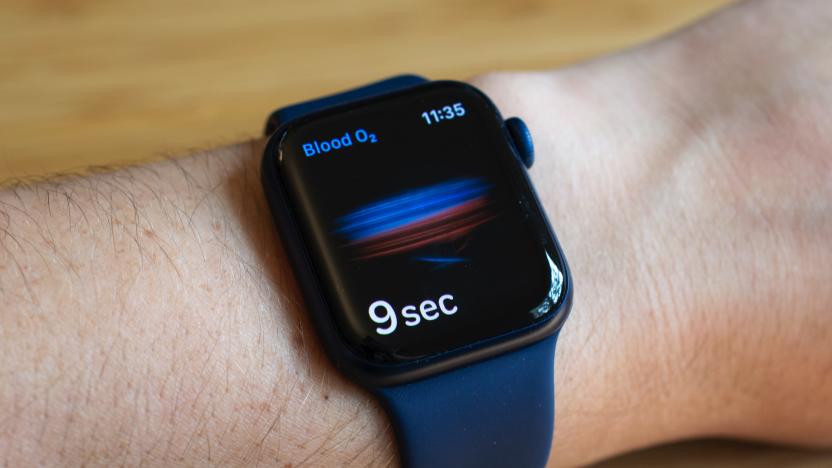
Apple begins studying whether the Watch can predict COVID-19
Apple has launched a study that could determine if a Watch or iPhone can predict COVID-19 and other respiratory illnesses.

Miniature robotic camera backpack shows how beetles see the world
After creating tiny sensor backpacks for bees, researchers from the University of Washington have built a more advanced model for beetles. Dubbed “a GoPro for beetles,” the robotic backpacks carry a tiny steerable camera that can stream video at 1 to 5 fps and pivot up to 60 degrees.
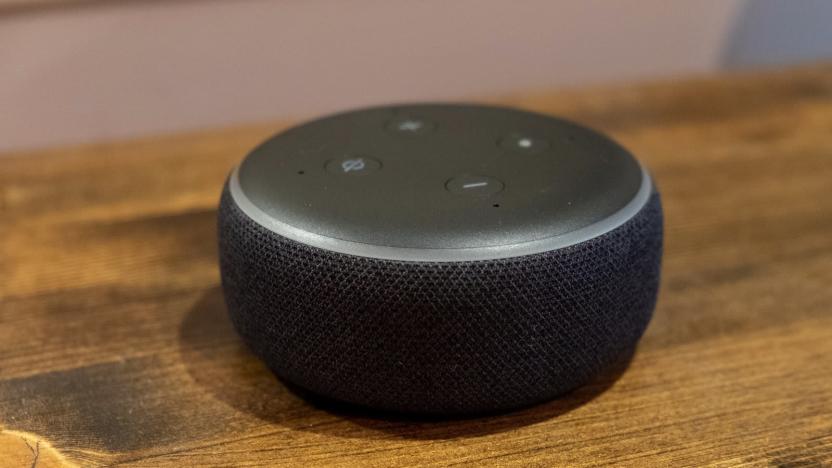
Your smart speaker could tell if you're experiencing cardiac arrest
Cardiac arrest frequently happens at home, and victims don't always have someone around to call for help. Your smart speaker might one day fill that role, though. University of Washington researchers have crafted a proof-of-concept AI that can detect the audio cues of cardiac arrest and respond accordingly. The system is trained on 911 call samples to listen for the telltale sounds of agonal breathing (that is, distinctive gasps for air) that come with cardiac arrest. It initially asks for help from people nearby to provide CPR, but will call 911 if there's no response.
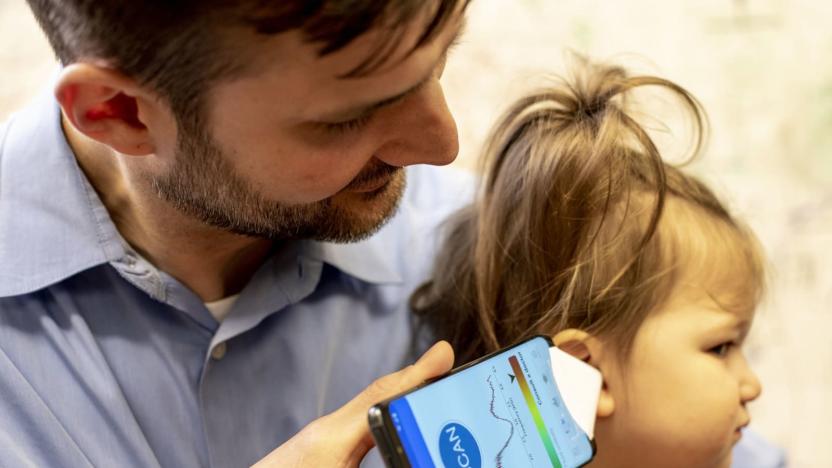
Parents may be able to spot ear infections with a paper cone and an app
Researchers are working on a smartphone app that could help diagnose ear infections. As NPR reports, the app uses the phone's microphone, its speaker and a small paper cone. In its current form, the app sends short, sound pulses through a funnel and into the ear canal. It then measures the echo of that sound, and an algorithm uses the reading to predict if there's fluid behind the eardrum, one of the common symptoms of infection.
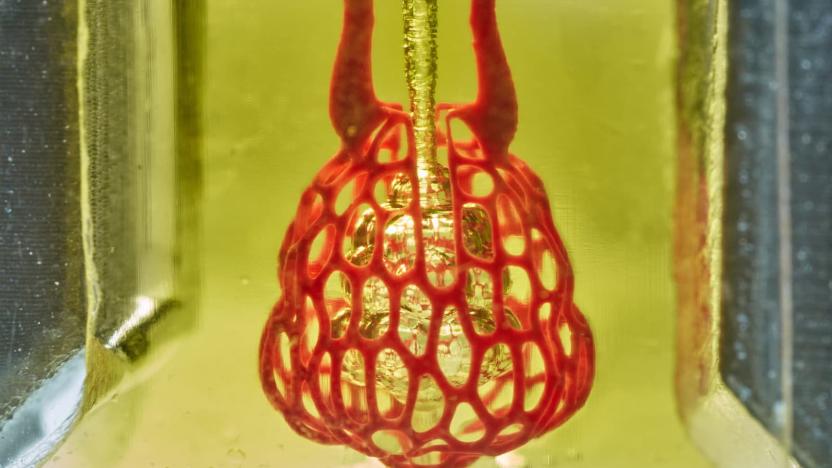
Bioengineers 3D print complex vascular networks
Bioengineers are one step closer to 3D printing organs and tissues. A team led by Rice University and the University of Washington have developed a tool to 3D print complex and "exquisitely entangled" vascular networks. These mimic the body's natural passageways for blood, air, lymph and other fluids, and they will be essential for artificial organs.
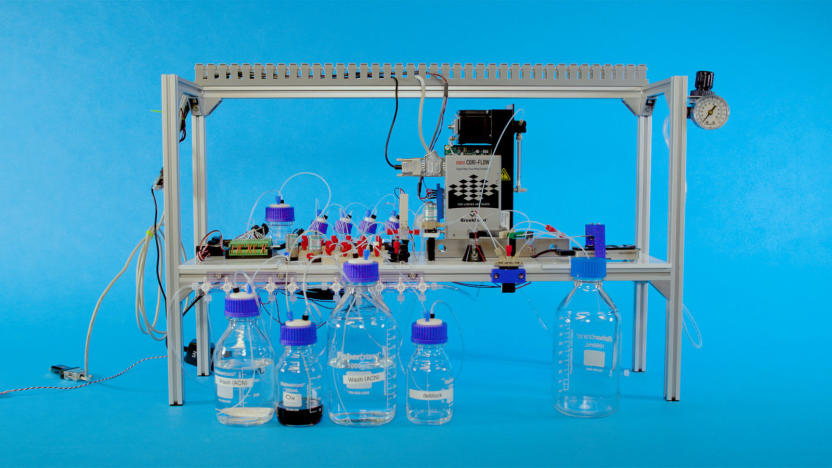
Microsoft device stores digital info as DNA
Microsoft is on its way to replacing data centers with DNA. The company and researchers from the University of Washington have successfully automated the process to translate digital information into DNA and back to bits. They now have the first, full end-to-end automated DNA storage device. And while there's room for improvement, Microsoft hopes this proof-of-concept will advance DNA storage technology.
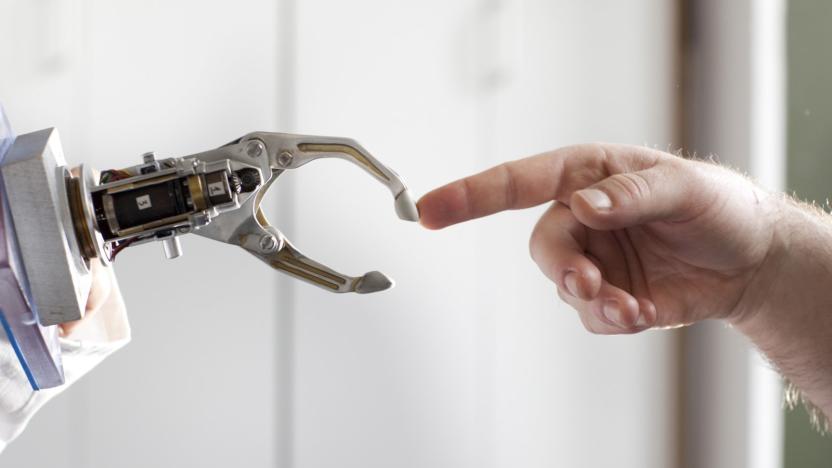
ARM targets your brain with new implantable chips
Elon Musk isn't the only one getting into the wetworks game. Chip designer ARM announced on Wednesday that it is pairing with the Center for Sensorimotor Neural Engineering (CSNE) at the University of Washington to develop a line of brain-implantable systems-on-a-chip that can interface between our squishy bits and the next generation of powered prosthetics.
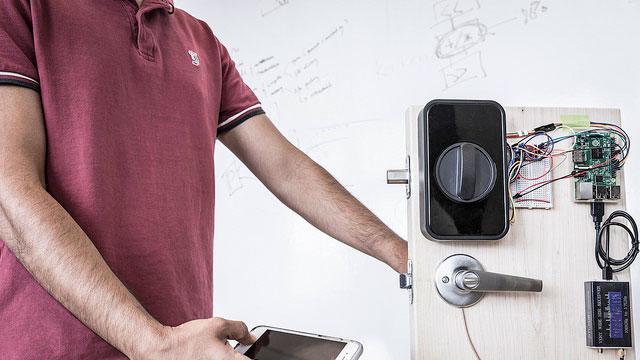
Researchers use the human body to transfer wireless passwords
Sending data over wireless formats like WiFi and Bluetooth is very convenient, but not necessarily secure. A Princeton report back in January revealed that some smart home devices unwittingly broadcast location information while others didn't encrypt their data streams at all. To get around the uncertainty of pushing information over the air, some scientists have posited using the body as a conduit. Instead of using its magnetic field, as previous researchers have, engineers from the University of Washington have pioneered a way to send wireless signals from a touchpad or screen held in one hand to a smart device in physical contact with the other.

Scientists model a Coronavirus' infectious bits for the first time
A collaboration of scientists from University of Washington (UW), the Pasteur Institute and the University of Utrecht have harnessed a state-of-the-art microscope and supercomputer to model a coronavirus' infection mechanism for the first time.

Scientists beam power to a fitness tracker via WiFi
Wireless electricity transmission sounds... dangerous, but the ability to do it could transform the internet of things. Researchers from the University of Washington have charged a JawBone UP24 fitness tracker with nothing but ordinary WiFi. They noticed that regular, ambient WiFi was strong enough to power a variety of tiny devices, but only in micro-bursts. So, they inserted "noise" into the signals to keep the power levels steady without disrupting data transmission. Using the technique, which they dubbed "PoWi-Fi" (we vote for just "Pow-Fi") they ran a low-power surveillance camera and temperature sensor from up to 6 meters (20 feet) away from the WiFi antenna.

Google researchers create amazing timelapses from public photos
There are a zillion digital photos in the public domain and scientists have just figured out something very cool to do with them. A team from Google and the University of Washington have developed a fully automated way to create time-lapse videos of popular tourists landmarks using images from Flickr, Picasa and other sites. Here's how it works: first, the researchers sorted some 86 million photos by geographic location, looking for widely snapped landmarks. Next, the photos were ordered by date and warped so that all had a matching viewpoint. Lastly, each photo was color-corrected to have a similar appearance, resulting in uniform time-lapse videos (below).

Watch out Kinect, AllSee does gesture control without a camera
What if you could turn the music down on your phone by just waving your hand? That's the idea behind AllSee, a new gadget under development by computer scientists at the University of Washington. Built by the same guys who created the gesture-recognition in the Galaxy Nexus, the tiny sensor works completely different than the feature in devices like the Galaxy S5 that require the use of the forward-facing camera. Instead, AllSee uses TV signals to not only help it recognize gestures, but also as exceptionally efficient source power. That means it doesn't need a battery to operate and can see your movements even when your phone is out of sight in your pocket -- pretty awesome.

Peripheral Vision 003: Professor John Slough on how nuclear power could get us to Mars in 30 days
"We thought of a clever idea of how you might use fusion to do manned space travel," explains John Slough. The University of Washington research professor discusses such seemingly impossible ideas with the cavalier nature one might otherwise reserve for picking out shirts in the morning. The white-haired academic wore his sandals to the office today, chuckling on occasion about the grandiosity of it all. Here in a nondescript business park in Redmond, WA, Slough and fellow UW staff members think they've found the secret to speedy interplanetary travel: small-scale nuclear fusion. "A realistic trip to Mars, as NASA has studied extensively, requires 1,680 days," Slough says, standing in front of the mess of electronics his company has taken to calling The Fusion Engine. "It required 11 launches from the most powerful rockets we have. Those two things would probably eliminate it. It would be something like $20 billion just to put the stuff in space. We thought that if you could exhaust the propellant at a speed that's comparable to the speed you want to go, which you can do with a different energy source, you can reduce that trip time to as short as 30 days." It's a lot to wrap one's head around, how imploding metal can heat plasma to fusion temperature in the neighborhood of hundreds of millions of degrees, but Slough breaks it all down on the latest Peripheral Vision with the patience and simple language of the high school science teacher we all wished we'd had.

Squid extract bridges human / machine divide, cyborgs to become very real
If we ever manage to capture a live giant squid, researchers at the University of Washington are going to have a field day. Enterprising minds at the institution's materials science and engineering department have discovered a use for chitosan -- an extract made from squid pen or crab shells that could lead us down a cybernetic road to human / machine interfaces. The team incorporated the organic compound into their field-effect transistor prototype, and effectively created the first protonic circuitry "that's completely analogous to [the way] an electronic current" can be manipulated. Naturally, the silicon-based tech isn't ready (or safe) for implantation into humans just yet, but could one day be used to control biological functions, sending on / off commands to our bodies. So, maybe we won't have to fear that robot apocalypse, after all. You never know, give scientists ample time to fully flesh this advancement out and Spielberg's next great cinematic, sci-fi opus could wind up becoming a cyborg rom-com. Stranger things have happened folks.

Gamers pwn University of Washington scientists, solve decade-long simian AIDS protein conundrum (video)
No gamer's escaped the throes of adolescence without hearing the damning refrain, "Video games'll rot your brain." While scientific research into that claim has so far proved inconclusive, it turns out the preferred pastime of our digital era could potentially cure cancer, and even help prevent AIDS -- in monkeys. Utilizing crowdsourced results from the downloadable protein-manipulating "game" Foldit, scientists at the University of Washington were able to attain a successful model of the simian AIDS-causing Mason - Pfizer monkey virus retroviral protease. For over a decade, researchers have been arduously attempting to reconstruct the folded shape of M-PMV with the aid of the task-specific Rosetta software, but to no avail. Now, in what they're calling a possible first, gamers were able to do what scientific brains and algorithms could not, creating a sufficient model for molecular replacement -- all in just three weeks. Feel like dedicating your leisure hours to this worthwhile cause? Then be sure to hit up the source link below, and transform yourself from couch potato to couch crusader.

EnerJ power-saving system prioritizes CPU voltage, may reduce energy consumption by 90 percent
It takes a lot of energy for computing systems or data centers to patch up critical errors, but what if we devoted less power to fixing less urgent issues? That's the basic idea behind EnerJ -- a new power-saving system that could cut a chip's energy consumption by 90 percent, simply by prioritizing critical problems over those that are less threatening. Unlike, say, liquid cooling techniques, the University of Washington's framework focuses exclusively on the programming side of the equation and revolves around two interlocking pieces of code: one that handles crucial, precision-based tasks (e.g., password encryption), and another designed to deal with processes that can continue to function, even when facing small errors. The system's software would separate the two codes, meaning that energy from one section of the chip would never be used to fix a major problem that the other should address, while allowing engineers to more efficiently allocate voltage to each region. The system has already cut energy usage by up to 50 percent in lab simulations, but researchers think the 90 percent threshold is well within their reach, with computer engineering professor Luis Ceze (pictured above) predicting that the system may even be able to increase battery life by a factor of ten. The team is hoping to release EnerJ as an open-source tool this summer, but for now, you can find more information in the PR after the break.

Computer scientists tackle the hard, long-lasting question of 'that's what she said'
Humor: it's what separates humans from machines, GlaDOS from HAL 9000, and even a good boss from a great boss. For millennia humor was seemingly unlearnable -- either you had it or you didn't -- but two University of Washington computer scientists have cracked part of the comedy code. They've developed an algorithm to find potential innuendos in everyday speech: a "that's what she said" detector. Their approach, dubbed "Double Entendre via Noun Transfer" (DeviaNT), uses a "sexiness" rating for nouns, adjectives, and verbs, while also analyzing the likelihood of similar combinations occurring in erotic literature. Higher values signal higher TWSS potential, and the researchers have successfully tested their program with user-generated content from websites like TWSSStories. Why is this useful, you ask? It's one more advance in natural-language processing, helping researchers codify the subtle workings of human language. Just imagine: one day, a softball like "I was trying all night, but I just could not get it in!" might receive the same "clever" response from your computer as from your juvenile friends. [Image via Isley Unruh]

University of Washington students hack Kinect to aid in robotic surgery
We're sure that a time will come when we're slightly less amazed by Kinect hacks but, right now, we're still just seeing one more impressive than the last -- and we're certainly OK with that. This latest comes to us from a group of students at the University of Washington, who had the bright idea to pair Microsoft's device with some of the robotic surgery projects currently being developed by the university's BioRobotics Lab. That combo isn't quite the sentient, Kinect-enhanced robo-surgeon you may have feared, though. The students are actually using Kinect to provide force-feedback to the actual, human surgeons controlling the robotic equipment -- something that would have been a $50,000 proposition without Kinect. As you might expect, however, the Kinect-based system isn't quite ready to be used for actual surgery as it is -- while it gets the job done as a proof of concept, the students note that the sensors will need to be scaled down, and the resolution improved in order to be deemed suitable for surgical use.

Kinect and haptics combine at the University of Washington to let you feel the future (video)
Sure, looking at the future is great and all, and that's what we feel like we're doing with all these wonderful Kinect hacks we've been covering lately. But what about feeling the future, man? That's what the kids at the University of Washington BioRobotics Laboratory are up to, taking the 3D images created by Microsoft's gaming peripheral and combining that with a 3D haptic controller, what looks to be a SensAble Phantom to us. The result? A so-called "haptic handshake," which looks even more uncomfortable than when Hank and Dean do their "Go Team Venture" routine. You can see both embedded after the break and decide for yourself. [Thanks, Jonas]

Shocker! Kids spending too much time in front of TV screens, too little in loving parents' embrace
Not that anyone really needed to have this spelled out, but America's tots are apparently spending too much time in front of the telly tubes. The latest study, conducted by the Seattle Children's Research Institute and the University of Washington, finds that children under the age of five are spending 4.1 hours of each day watching movies or TV, doubling the recommended maximum of two hours a day. Whether you take the slightly arbitrary two-hour RDA to heart or not, it's undeniable that all of us -- not just the young 'uns -- are spending increasingly larger chunks of our time looking at the world through a screen and not through our own retinas. And, if you want an extra topping of alarmist extrapolation, these figures come from a research sample concluded in 2006, today's better-equipped toddlers are very likely to outdo those numbers when mobile devices and the like are factored in. Imagine how bad this would all be if the US didn't have so much quality programming to entertain and educate them with.











